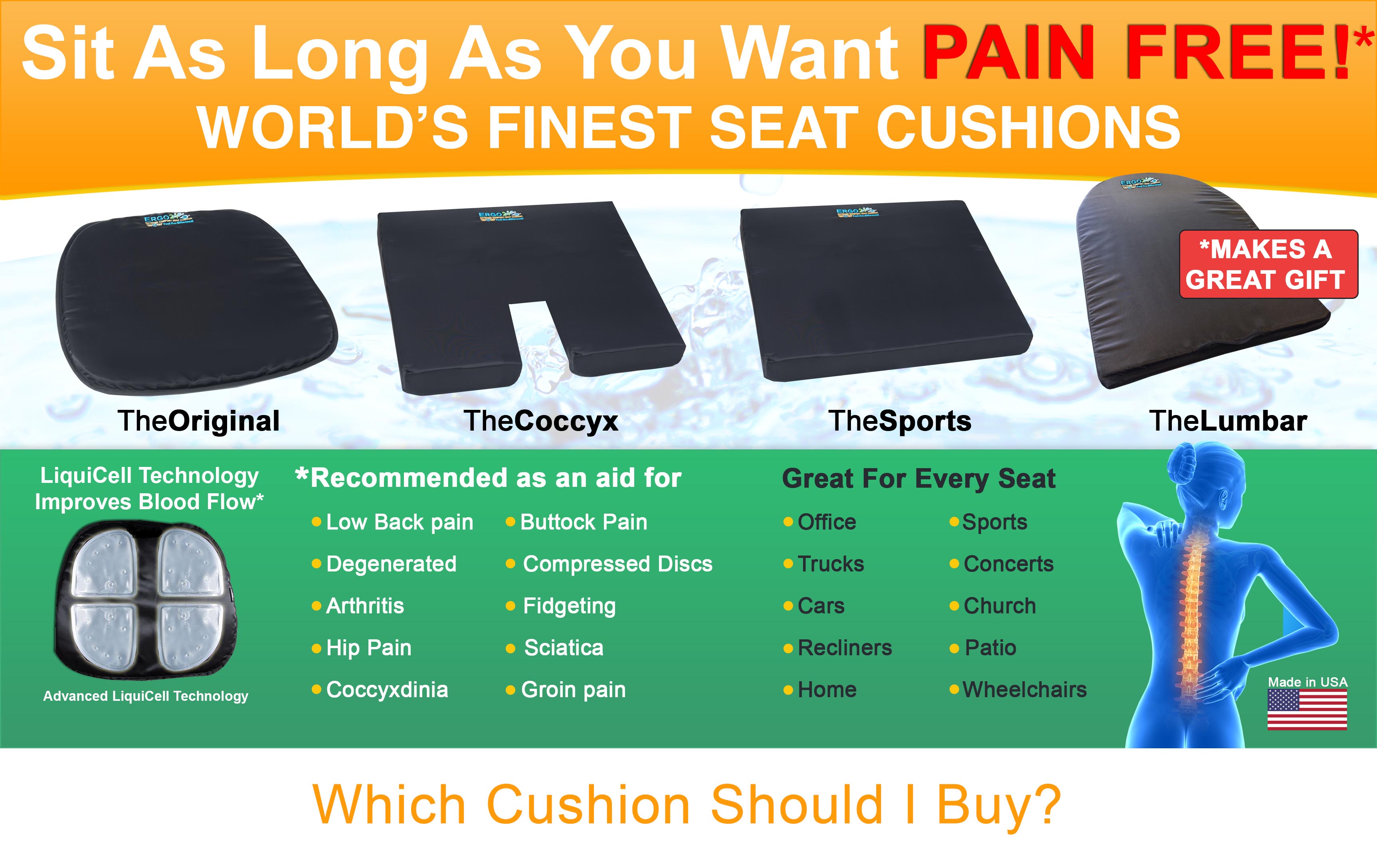Types of Chair Cushions for Pressure Sore Prevention: Best Chair Cushion For Pressure Sores

Right, so pressure sores are a proper nightmare, innit? No one wants to be dealing with those. Getting the right chair cushion can be a total game-changer, though, so let’s dive into the options. We’ll break down the different types and what makes them tick.
Chair Cushion Material Comparison, Best chair cushion for pressure sores
Choosing the right cushion material is mega important for pressure relief. Different materials offer different levels of support and comfort. Here’s a lowdown on some of the top contenders:
| Feature | Gel Cushions | Memory Foam Cushions | Air-Filled Cushions |
|---|---|---|---|
| Pressure Relief | Excellent; conforms to body shape, distributes weight evenly. | Good; conforms to body shape, absorbs pressure points. | Good; pressure adjustable via inflation, can be customized. |
| Breathability | Generally good, depending on the cover material. | Can be poor; tends to retain heat and moisture. | Excellent; air circulation keeps things cool and dry. |
| Durability | Fairly durable; gel can crack or leak if punctured. | Good; generally long-lasting, but can flatten over time. | Variable; prone to punctures, may need replacing frequently. |
| Weight | Can be quite heavy. | Can be heavy, depending on thickness. | Lightweight; easy to transport and handle. |
| Cost | Generally more expensive. | Mid-range price. | Relatively inexpensive. |
| Cleaning | Usually wipe-cleanable covers. | Often machine-washable covers. | Usually wipe-cleanable covers. |
Pressure-Reducing Cushion Designs
There are loads of different cushion designs out there, each with its own special features. Think of it like choosing the right trainers for a specific sport – you need the right tool for the job.
For example, imagine a cushion with a cutout in the middle, shaped like a donut. This “donut” design relieves pressure on the tailbone and is dead handy for those who spend ages sat down. The weight is distributed around the edges, preventing pressure build-up in one spot. Another design might incorporate multiple layers of different materials, combining the benefits of, say, gel and memory foam. This layered approach provides targeted pressure relief and additional support where it’s needed most. Then there are those with a wave-like pattern; this is designed to promote airflow and keep things comfy.
Cushions for Different Seating Types
Different seats mean different cushion needs. A cushion for a wheelchair needs to be durable and supportive, potentially with extra features like straps to keep it securely in place. It’s got to be able to cope with more movement and potential impacts. Office chair cushions, on the other hand, might prioritize comfort and ergonomic support, focusing on posture and long periods of sitting. Dining chair cushions, meanwhile, are often more about adding comfort to existing seating. They don’t usually need to be as heavy-duty or offer the same level of pressure relief as a wheelchair cushion. Basically, it’s all about matching the cushion to the chair and the person using it. It’s not a one-size-fits-all situation, mate.
Factors to Consider When Choosing a Cushion

Right, so you’re after a chair cushion to sort out those pesky pressure sores, innit? Choosing the right one isn’t just about picking the first comfy-looking thing you see; it’s a proper mission. Get it wrong, and you’re back to square one with the pain. Get it right, and you’re chilling like a villain, pain-free and comfy.
Choosing the perfect cushion is all about you, mate. Your weight, shape, and how bad your pressure sores are all play a blinder of a role. A cushion that’s perfect for your mate Dave might be a total dud for you. Think of it like finding the right pair of trainers – one size doesn’t fit all. A heavier person will need a sturdier cushion than someone lighter, and someone with severe sores needs something with extra support and pressure relief.
Cushion Features: What to Look For
Knowing what features to look out for is dead important. A dodgy cushion can actually make things worse, so don’t be a mug. Here’s the lowdown:
- Density: Think of this as the cushion’s “oomph.” A higher density means more support and pressure relief. Imagine a memory foam cushion – that’s high density. A flimsy, thin one? Not so much. You want something that’ll properly mould to your body without bottoming out.
- Thickness: This is pretty self-. A thicker cushion offers more protection and distributes pressure better. But, too thick, and it might be awkward to sit on or get in and out of your chair.
- Breathability: No one wants a sweaty bum, right? Look for cushions made from breathable materials like mesh or open-cell foam. These let air circulate, keeping you cool and comfy.
- Cover Material: The cover needs to be durable, easy to clean, and ideally, waterproof or water-resistant. Think about how often you’ll be cleaning it – a machine-washable cover is a proper lifesaver.
- Shape and Size: The cushion should fit your chair properly. Too small, and it won’t offer enough support. Too big, and it’ll be a right faff.
Pricing and Value
Alright, so let’s talk dosh. Prices for pressure relief cushions vary like crazy. You can find cheapies for under £20, but top-of-the-range ones can cost upwards of £100. The price difference usually comes down to the materials used, the quality of construction, and any extra features (like built-in gel inserts or adjustable settings). A cheap cushion might seem like a bargain, but if it doesn’t do the job properly, you’re wasting your money in the long run. A more expensive cushion might be a better investment if it lasts longer and provides better pressure relief, ultimately saving you money on potential medical costs. Think of it as an investment in your comfort and well-being.
